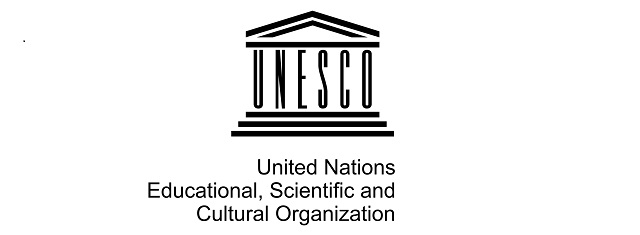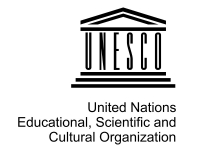Vips
UNESCO Director-General visits Pacific Tsunami Warning Center in Hawaii
Mission to Hawaii Sept 1 to 3, 2016

(Source: UNESCO)
USPA NEWS -
UNESCO Director-General Irina Bokova visited the Hawaii Pacific Tsunami Warning Center (PTWC) and the International Tsunami Information Centre (ITIC), two key partners of the UNESCO Intergovernmental Oceanographic Commission, during her mission to Hawaii (USA) from 1 to 3 September.
UNESCO Director-General Irina Bokova visited the Hawaii Pacific Tsunami Warning Center (PTWC) and the International Tsunami Information Centre (ITIC), two key partners of the UNESCO Intergovernmental Oceanographic Commission, during her mission to Hawaii (USA) from 1 to 3 September.
This visit was an opportunity to renew UNESCO´s commitment to ocean cooperation with the United States, in order to enhance ocean science and strengthen the resilience of societies facing natural disasters across the Pacific. 'These two centers were established 50 years ago under the auspices of UNESCO, and our cooperation has never been so vital,' said the Director General.
This visit was an opportunity to renew UNESCO´s commitment to ocean cooperation with the United States, in order to enhance ocean science and strengthen the resilience of societies facing natural disasters across the Pacific. 'These two centers were established 50 years ago under the auspices of UNESCO, and our cooperation has never been so vital,' said the Director General.
Dr. Laura Kong, Director ITIC, highlighted the need to combine excellence in ocean observation with constant capacity building of local communities. 'It is not enough to invest in a robust tsunami warning system (to save lives, people must know what to do and where to go within the very first minutes) this is why awareness raising and education must be developed.'
'The 2004 tsunami in the Indian ocean has been a decisive moment for the entire tsunami scientific community. It has fostered the creation of tsunami early warning systems all over the world, with the strong support and leadership of the UNESCO Intergovernmental Oceanographic Commission,' said Charles McCreery, Director of PTWC.
'The 2004 tsunami in the Indian ocean has been a decisive moment for the entire tsunami scientific community. It has fostered the creation of tsunami early warning systems all over the world, with the strong support and leadership of the UNESCO Intergovernmental Oceanographic Commission,' said Charles McCreery, Director of PTWC.
'Tsunami Warning stands at the heart of international scientific cooperation ““ this is research and knowledge-sharing at its very bes'“ said the Director General. 'Disaster risk reduction stands also at the heart of UNESCO´s work. It calls for more synergies among scientific research, technology and education, building also on the wealth of indigenous knowledge and local cultures to better understand our environment and protect human lives. It needs more and better funding, it requires more and stronger cooperation.' she added.
The United States is a key partner for the Tsunami Program of the Intergovernmental Oceanographic Commission of UNESCO, which is the only organization for marine science within the UN system, coordinating programs in research, services and capacity-building. The U.S. was among the first to call for an establishment of the Pacific Tsunami Warning and Mitigation System (PTWS) in 1968. It ensured until 2013, together with the Japan Meteorological Agency, the interim service for the new Indian Ocean Tsunami Warning System established under the auspices of UNESCO in response to the tsunami in Indonesia in 2004.
The United States National Oceanic and Atmospheric Administration (NOAA) is a longstanding partner of UNESCO, notably through capacity building activities. 'It is vital that such cooperation is maintained and developed, for the common good of humanity and the planet.' said the Director-General. 'A tsunami disregards borders. International cooperation is the only way forward. The tools and rich documentation of these centers, the maps and “˜Science on a Sphere 3D´ imagery are exceptional ways to help people understand there is only one ocean, and that we are all connected.'
Further to her visit to the two Centers, Ms. Bokova held a working meeting with Dr. Kathryn Sullivan, the U.S. Under Secretary of Commerce for Oceans and Atmosphere and Administrator of NOAA. They discussed overall coordination for ocean and coastal management and the implementation of Sustainable Development Goal 14 on ocean conservation and sustainability through data exchange, ocean science and capacity building.
Source : UNESCO
Ruby BIRD
http://www.portfolio.uspa24.com/
Yasmina BEDDOU
http://www.yasmina-beddou.uspa24.com/
Source : UNESCO
Ruby BIRD
http://www.portfolio.uspa24.com/
Yasmina BEDDOU
http://www.yasmina-beddou.uspa24.com/
Ruby Bird Yasmina Beddou Unesco Pacific Tsunami Warning Center Hawaii Natural Disasters Pacific Centers
Liability for this article lies with the author, who also holds the copyright. Editorial content from USPA may be quoted on other websites as long as the quote comprises no more than 5% of the entire text, is marked as such and the source is named (via hyperlink).






